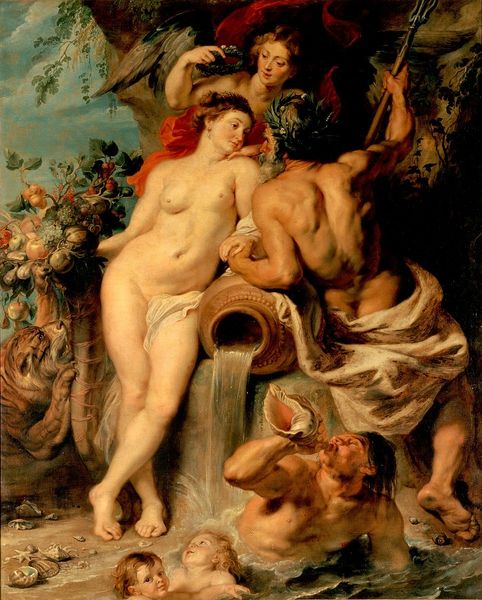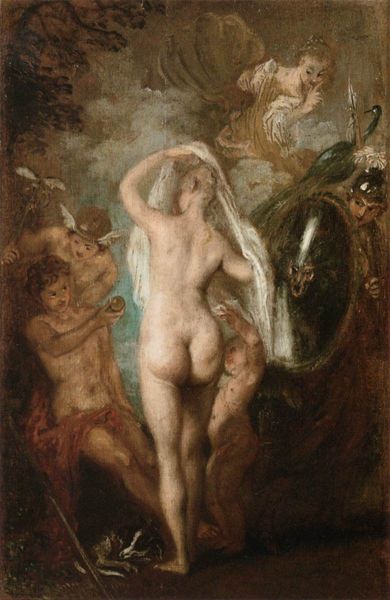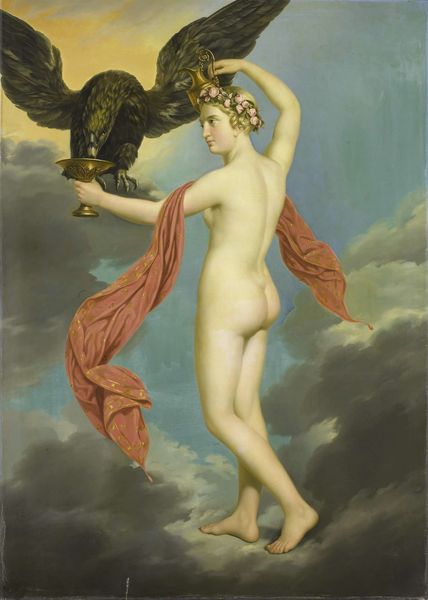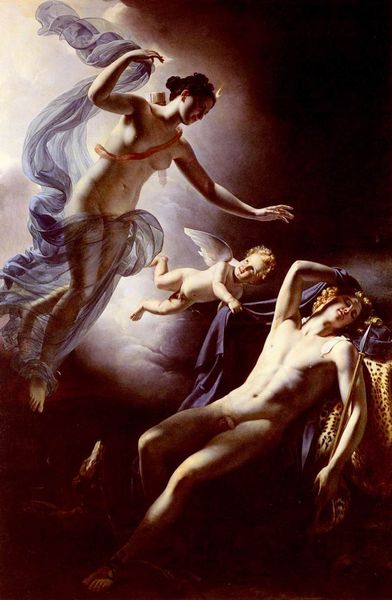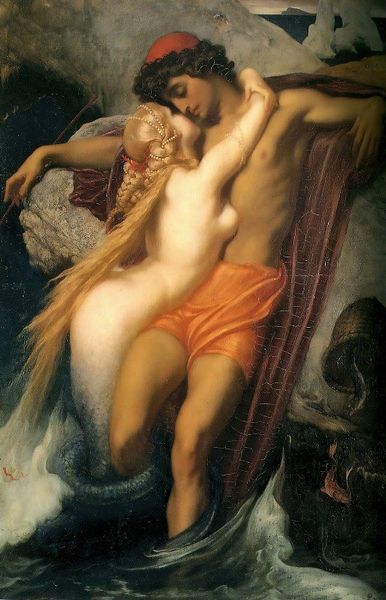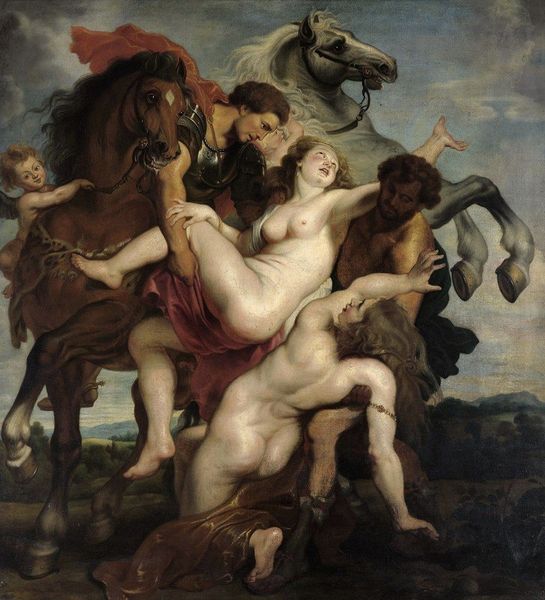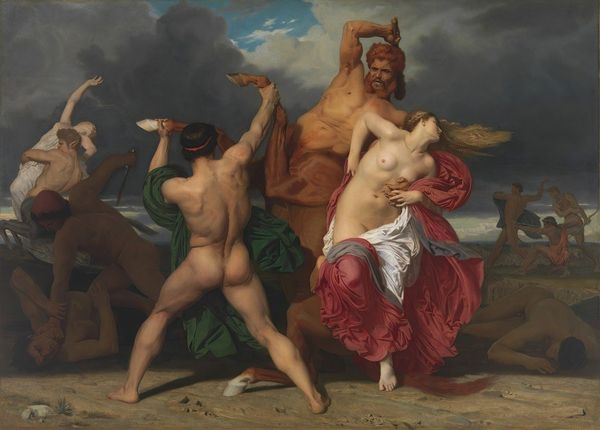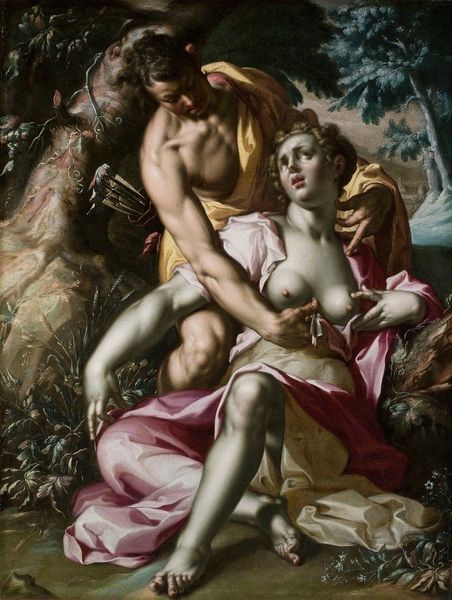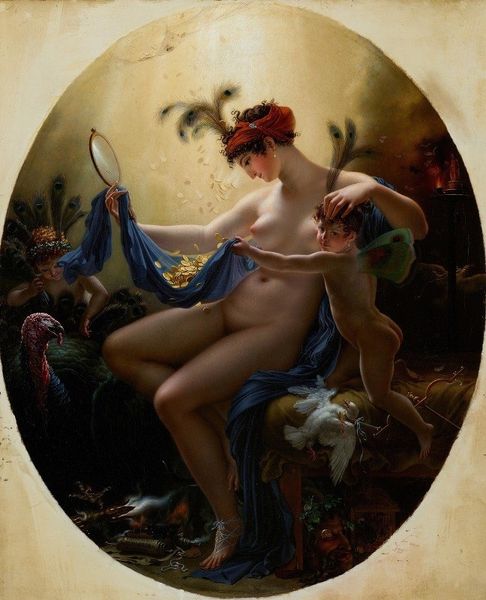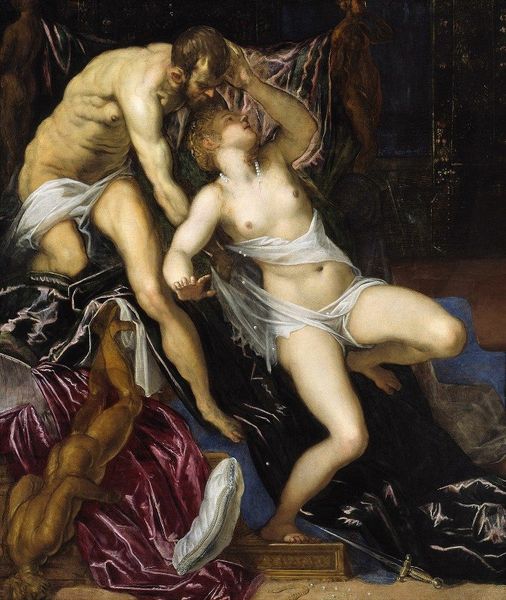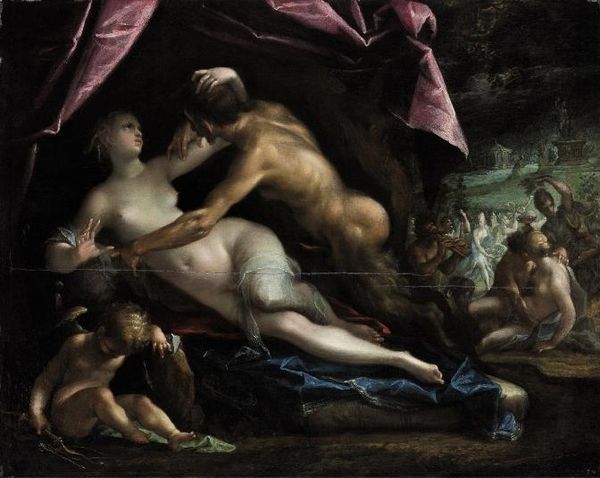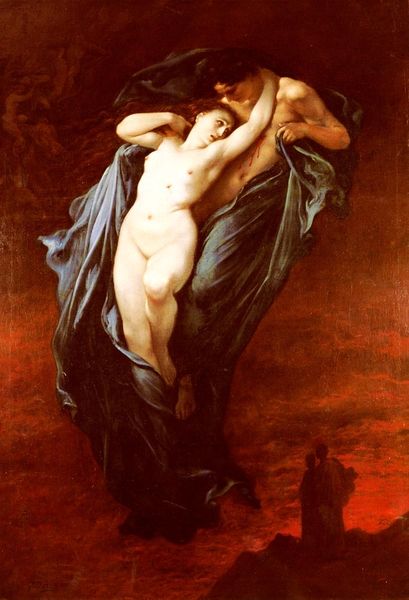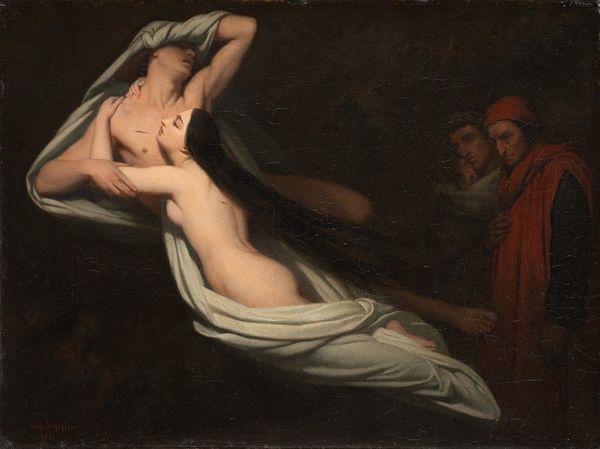
Copyright: Public domain
Henri-Pierre Picou painted "Andromeda Chained to a Rock" in 1874, a period when academic art celebrated mythological and historical subjects. Here, Picou presents the Greek myth of Andromeda, punished for her mother's hubris by being chained to a rock as a sea monster approaches. Perseus intervenes, holding the severed head of Medusa, whose gaze turns enemies to stone. This act of heroic intervention is heightened by Andromeda's nakedness, a common trope in classical art for portraying vulnerability. The composition invites reflection on gendered power dynamics; Andromeda as the helpless victim, Perseus as the powerful rescuer. But what does it mean to depict a woman's body as a spectacle of distress? Picou’s painting speaks to the themes of sacrifice and redemption, but also to the visual traditions that have historically framed women's bodies in art. Consider how the drama of this scene—the monster, the hero, the chained woman—pulls at our emotions, even as it reinforces familiar narratives.
